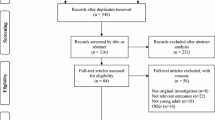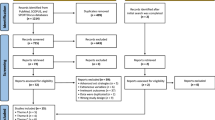Abstract
Background and aims
It is well known that components of sarcopenia (i.e., decreased muscle strength and mass) are related to falls in older adults. However, the possible effects of changes in muscle quality on falls have not been identified. This study aimed to evaluate the changes in muscle quality reflected by muscle stiffness derived from shear-wave elastography (SWE) and its association with falls in older adults.
Methods
A total of 101 geriatric outpatients were included in the study. Assessments of physical performance, muscle strength (handgrip strength), muscle mass (muscle ultrasonography and bioelectrical impedance analysis), and muscle stiffness of the medial head of gastrocnemius (GCM) in relaxation and passive stretching were performed. The history of falls in the previous year was questioned and recorded.
Results
The median (25–75 percentiles) age of participants was 73 (69–77) years, and 66.3% (n = 67) were female. According to fall history, participants were divided into non-fallers and fallers groups, and 72 (71.3%) and 29 (28.7%) participants were in each group, respectively. The median muscle stiffness of (Emean) the GCM in passive stretching was significantly lower in the fallers group (p < 0.001), and it was significantly correlated with the number of falls in the previous year (r: – 0.274, p: 0.010). In regression analyses, the Emean value of GCM in passive stretching was significantly associated with falls independent of confounders (OR: 0.944, 95% CI 0.90–0.98, p = 0.010).
Discussion and conclusion
This is the first study to reveal the relationship between falls and SWE-defined lower GCM stiffness independently of muscle mass and strength.


Similar content being viewed by others
References
Gelbard R, Inaba K, Okoye OT et al (2014) Falls in the elderly: a modern look at an old problem. Am J Surg 208:249–253
Inouye SK, Studenski S, Tinetti ME et al (2007) Geriatric syndromes: clinical, research, and policy implications of a core geriatric concept. J Am Geriatr Soc 55:780–791
Montero-Odasso M, van der Velde N, Martin FC et al (2022) World guidelines for falls prevention and management for older adults: a global initiative. Age Ageing 51:afac205
Cruz-Jentoft AJ, Bahat G, Bauer J et al (2019) Sarcopenia: revised European consensus on definition and diagnosis. Age Ageing 48:16–31
Ohmae N, Yasui-Yamada S, Furumoto T et al (2023) Muscle mass, quality, and strength; physical function and activity; and metabolic status in cachectic patients with head and neck cancer. Clin Nutr ESPEN 53:113–119
Wu M, Wei Y, Lv J et al (2022) Associations of muscle mass, strength, and quality with all-cause mortality in China: a population-based cohort study. Chin Med J (Engl) 135:1358–1368
Yeung SSY, Reijnierse EM, Pham VK et al (2019) Sarcopenia and its association with falls and fractures in older adults: a systematic review and meta-analysis. J Cachexia Sarcopenia Muscle 10:485–500
Okyar Baş A, Baş H, Ceylan S et al (2022) Changes in muscle quality identified by shear-wave elastography and association with sarcopenia. JPEN J Parenter Enteral Nutr 47:253–264
Anderson DE, Quinn E, Parker E et al (2016) Associations of computed tomography-based trunk muscle size and density with balance and falls in older adults. J Gerontol A Biol Sci Med Sci 71:811–816
Davis DL, Roberts A, Calderon R et al (2023) Gluteal muscle fatty infiltration, fall risk, and mobility limitation in older women with urinary incontinence: a pilot study. Skeletal Radiol 52:47–55
Hill C, James RS, Cox VM et al (2020) Age-related changes in isolated mouse skeletal muscle function are dependent on sex, muscle, and contractility mode. Am J Physiol Regul Integr Comp Physiol 319:R296–R314
Katz S, Ford AB, Moskowitz RW et al (1963) Studies of illness in the aged. The index of ADL: a standardized measure of biological and psychosocial function. JAMA 185:914–919
Arik G, Varan HD, Yavuz BB et al (2015) Validation of Katz index of independence in activities of daily living in Turkish older adults. Arch Gerontol Geriatr 61:344–350
Lawton MP, Brody EM (1969) Assessment of older people: self-maintaining and instrumental activities of daily living. Gerontologist 9:179–186
Guigoz Y, Lauque S, Vellas BJ (2002) Identifying the elderly at risk for malnutrition. The mini nutritional assessment. Clin Geriatr Med 18:737–757
McGregor RA, Cameron-Smith D, Poppitt SD (2014) It is not just muscle mass: a review of muscle quality, composition and metabolism during ageing as determinants of muscle function and mobility in later life. Longev Healthspan 3:9
Perkisas S, Bastijns S, Baudry S et al (2021) Application of ultrasound for muscle assessment in sarcopenia: 2020 SARCUS update. Eur Geriatr Med 12:45–59
Bergen G, Stevens MR, Burns ER (2016) Falls and fall injuries among adults aged ≥ 65 years - United States, 2014. MMWR Morb Mortal Wkly Rep 65:993–998
Halil M, Ulger Z, Cankurtaran M et al (2006) Falls and the elderly: is there any difference in the developing world? A cross-sectional study from Turkey. Arch Gerontol Geriatr 43:351–359
Friedman E, Shorey C (2019) Inflammation in multimorbidity and disability: an integrative review. Health Psychol 38:791–801
Yang Y, Hu X, Zhang Q et al (2016) Diabetes mellitus and risk of falls in older adults: a systematic review and meta-analysis. Age Ageing 45:761–767
Gadelha AB, Neri SGR, Oliveira RJ et al (2018) Severity of sarcopenia is associated with postural balance and risk of falls in community-dwelling older women. Exp Aging Res 44:258–269
Gadelha AB, Neri SGR, Bottaro M et al (2018) The relationship between muscle quality and incidence of falls in older community-dwelling women: an 18-month follow-up study. Exp Gerontol 110:241–246
Yamada M, Kimura Y, Ishiyama D et al (2022) Combined effect of lower muscle quality and quantity on incident falls and fall-related fractures in community-dwelling older adults: a 3-year follow-up study. Bone 162:116474
Vitale JA, Messina C, Albano D et al (2021) Appendicular muscle mass, thigh intermuscular fat infiltration, and risk of fall in postmenopausal osteoporotic elder women. Gerontology 67:415–424
Alfuraih AM, Tan AL, O’Connor P et al (2019) The effect of ageing on shear wave elastography muscle stiffness in adults. Aging Clin Exp Res 31:1755–1763
Pang J, Wu M, Liu X et al (2021) Age-related changes in shear wave elastography parameters of the gastrocnemius muscle in association with physical performance in healthy adults. Gerontology 67:306–313
Kim N, Park J, Shin H et al (2022) Gastrocnemius medial head stiffness is associated with potential fall risk in community-dwelling older adults. Healthcare (Basel) 10:785
Acknowledgements
The authors especially thank ‘Mindray Biomedical Shenzhen’ for their unconditional support.
Funding
This research did not receive any funding from agencies in the public, commercial, or not-for-profit sectors.
Author information
Authors and Affiliations
Contributions
AOB, HB, and MGH equally contributed to the conception and design of the research; AOB, HB, MG, SC, and MK equally contributed to the acquisition and analysis of the data; AOB, HB, YO, MH, ZŞ, BBD, and MC equally contributed to the interpretation of the data; AOB, HB, and MGH critically revised the manuscript and drafted the manuscript. All authors agree to be fully accountable for ensuring the integrity and accuracy of the work and read and approved the final manuscript.
Corresponding author
Ethics declarations
Conflict of interest
The authors declare that they have no conflict of interest.
Statement of human and animal rights
All procedures performed in studies involving human participants were in accordance with the ethical standards of the institutional and/or national research committee and with the 1964 Declaration of Helsinki and its later amendments or comparable ethical standards.
Informed consent
Informed consent was obtained from all participants included in the study, and the study's ethics approval was taken from the Hacettepe University Department of Medicine clinical research ethics committee (decision number: 2022/18-47).
Additional information
Publisher's Note
Springer Nature remains neutral with regard to jurisdictional claims in published maps and institutional affiliations.
Rights and permissions
Springer Nature or its licensor (e.g. a society or other partner) holds exclusive rights to this article under a publishing agreement with the author(s) or other rightsholder(s); author self-archiving of the accepted manuscript version of this article is solely governed by the terms of such publishing agreement and applicable law.
About this article
Cite this article
Baş, H., Okyar Baş, A., Ceylan, S. et al. Lower gastrocnemius muscle stiffness, derived from elastography, is an independent factor for falls in older adults. Aging Clin Exp Res 35, 2979–2986 (2023). https://doi.org/10.1007/s40520-023-02605-6
Received:
Accepted:
Published:
Issue Date:
DOI: https://doi.org/10.1007/s40520-023-02605-6




